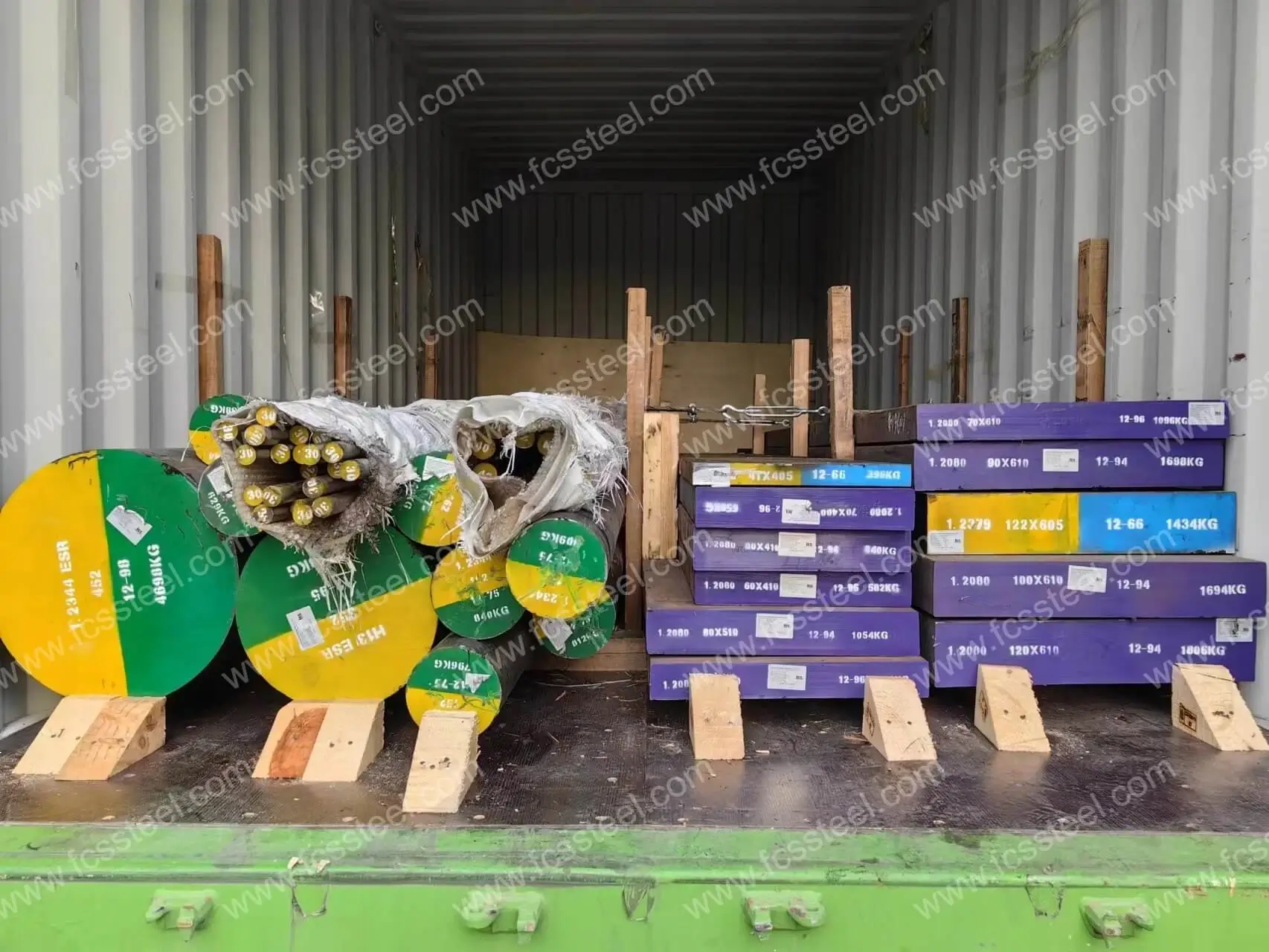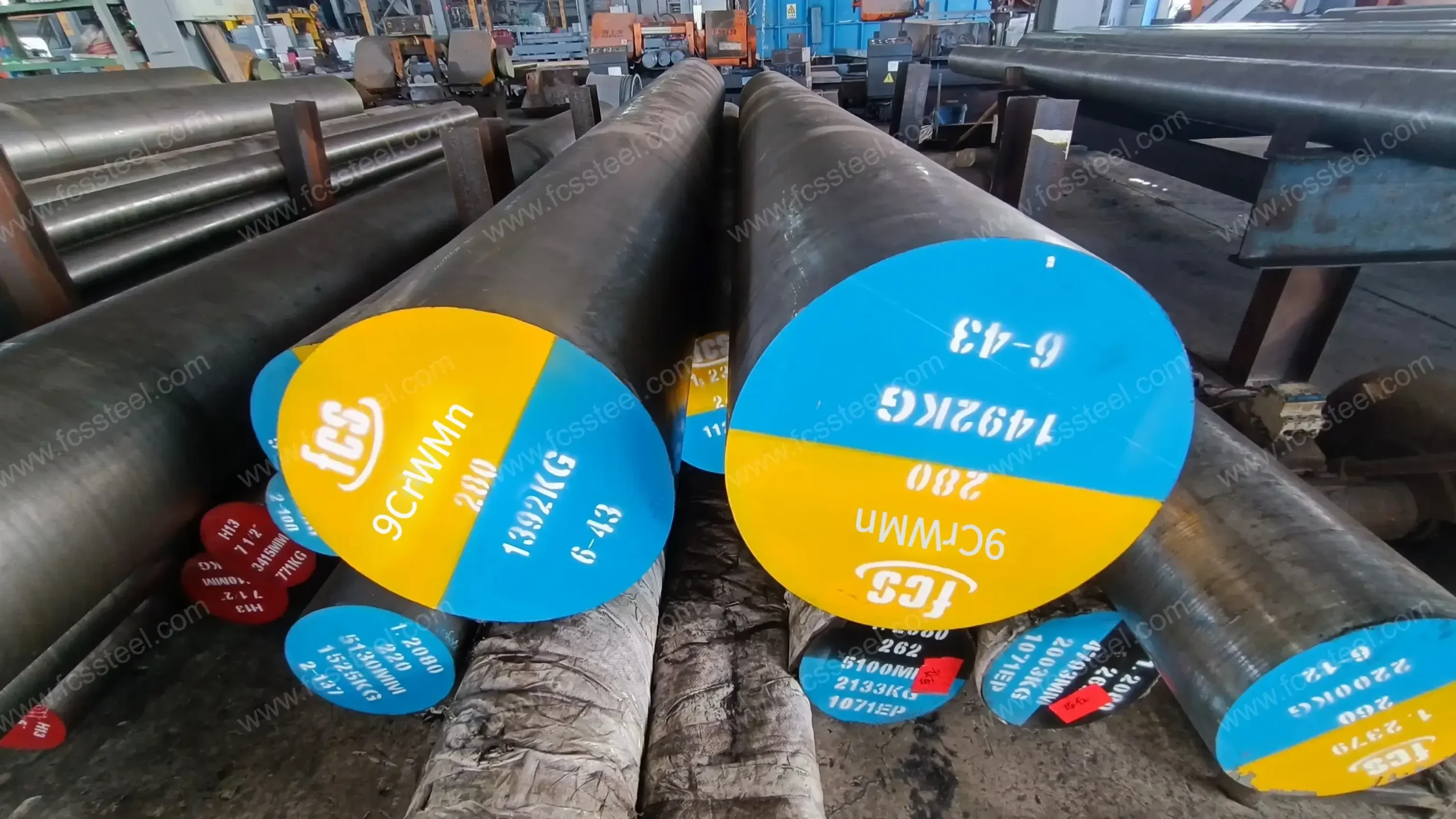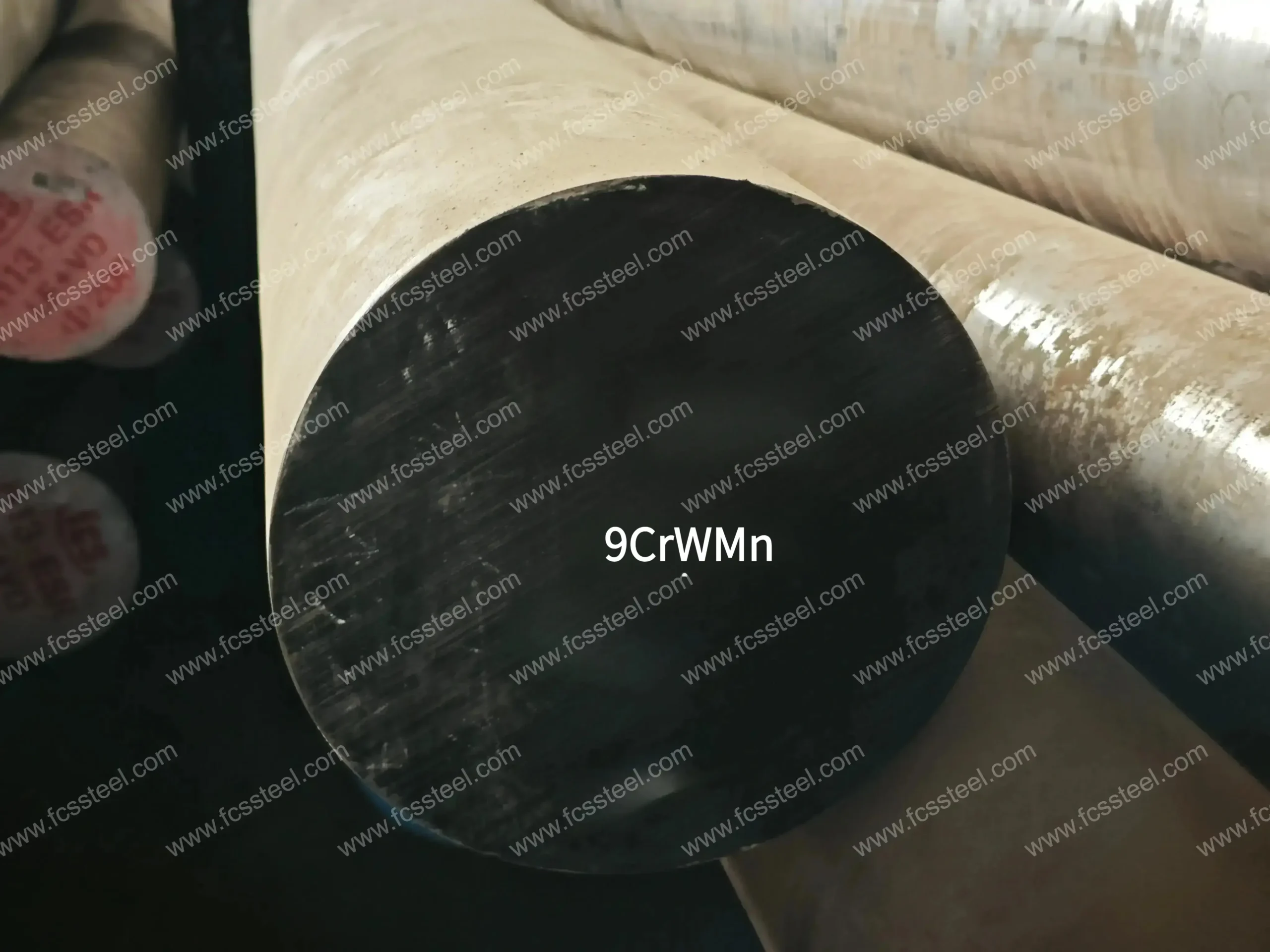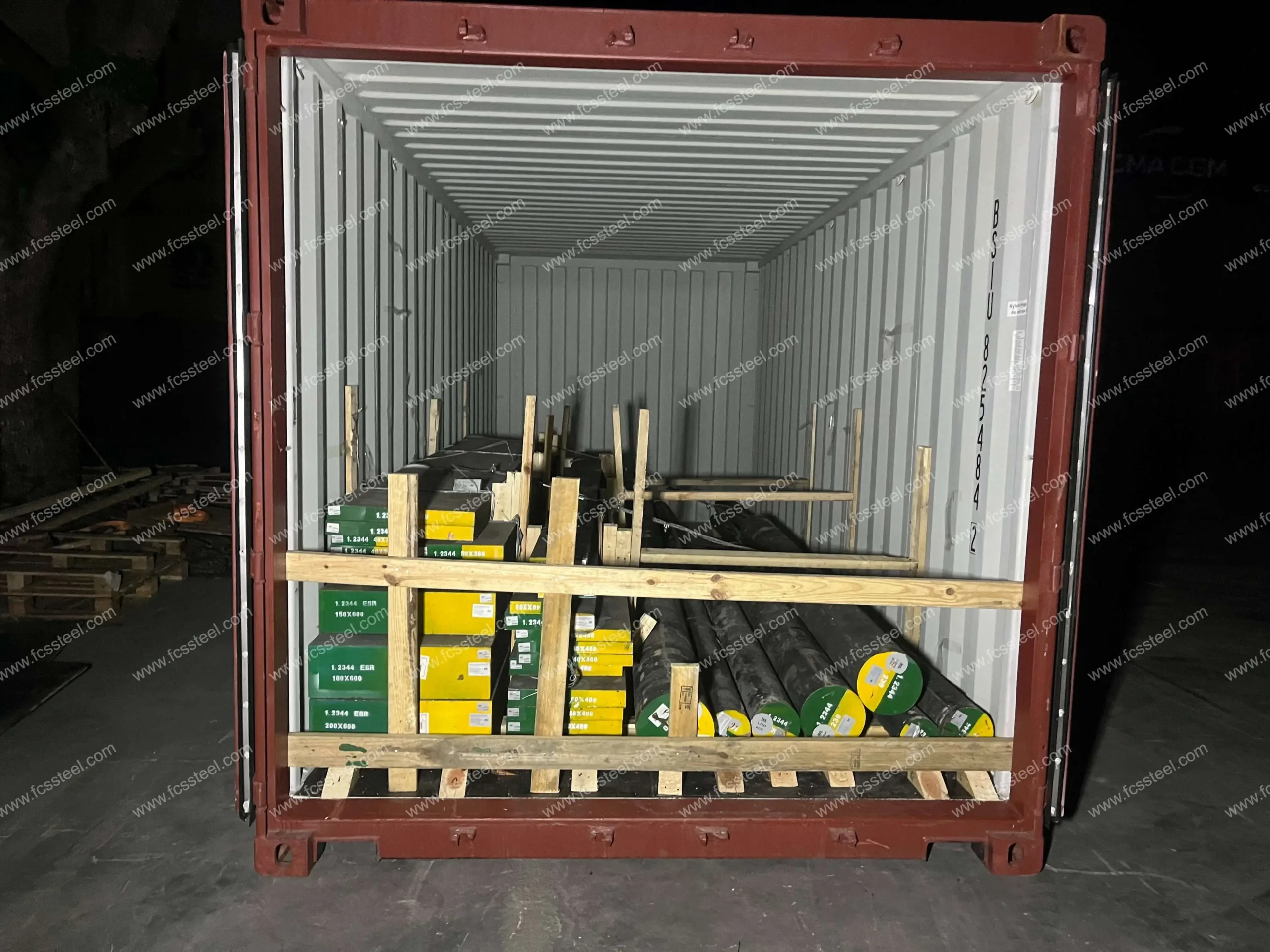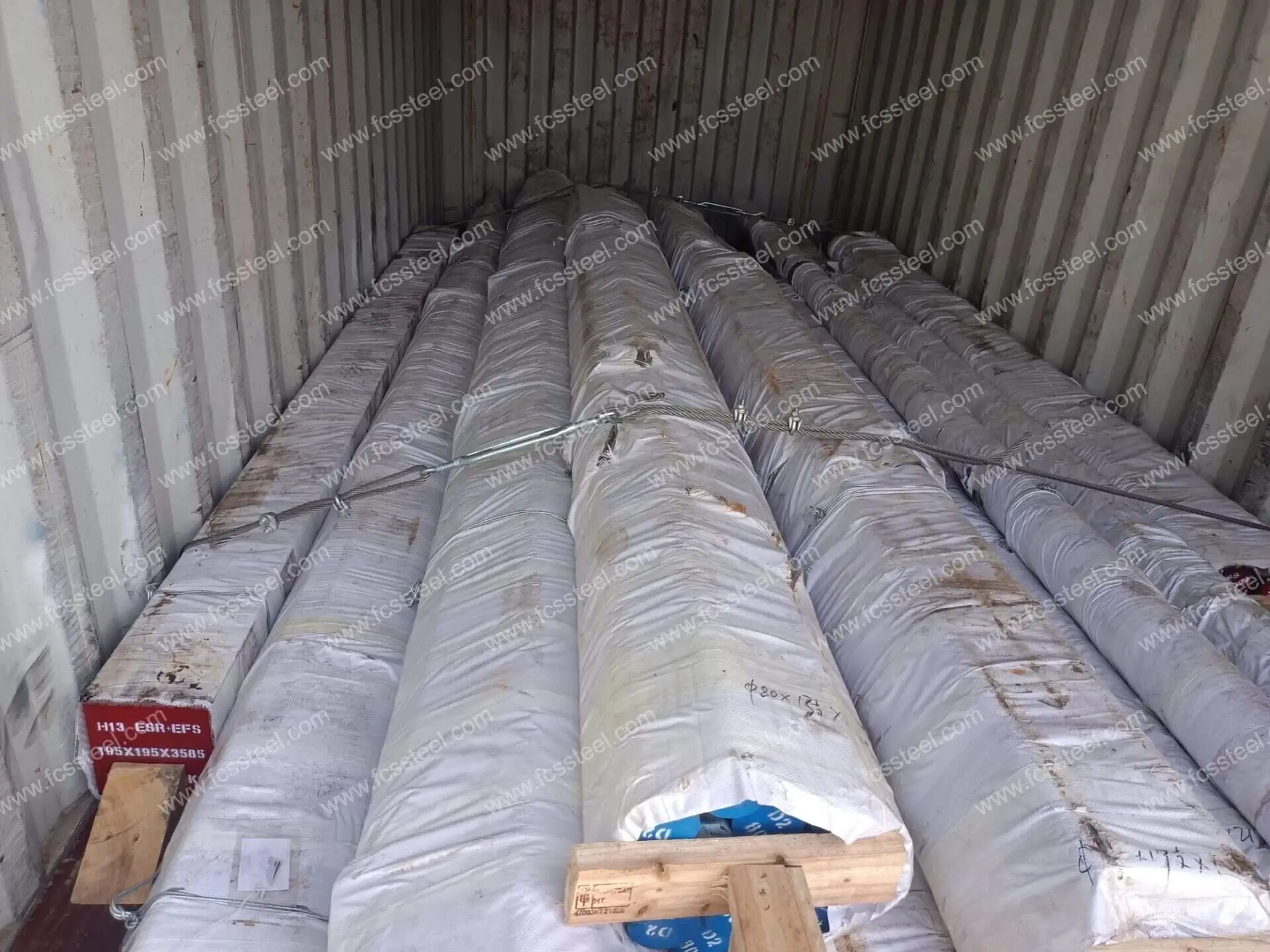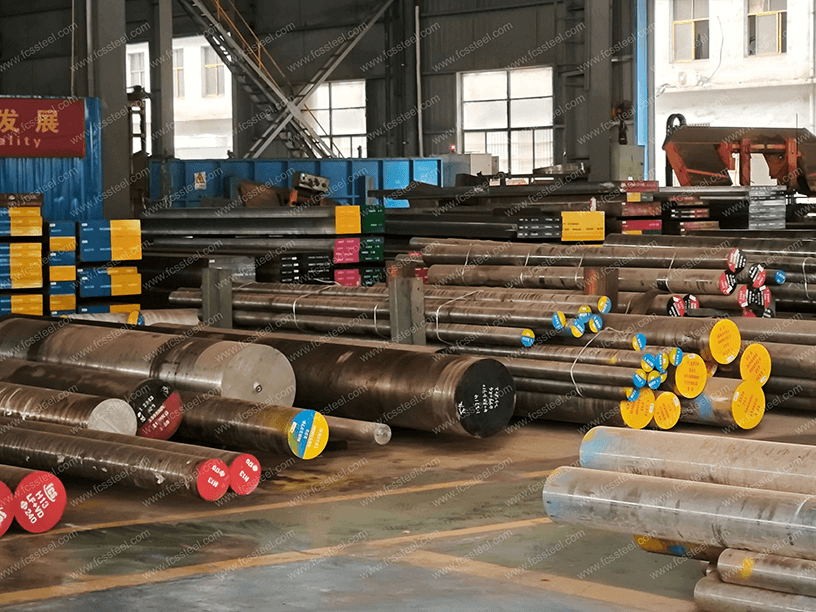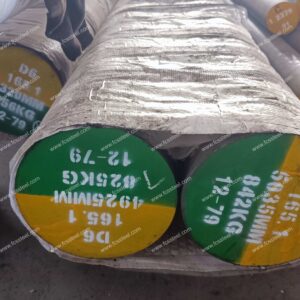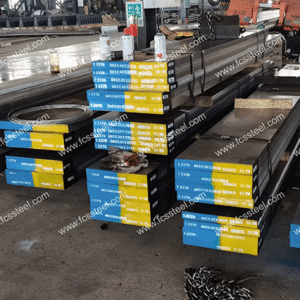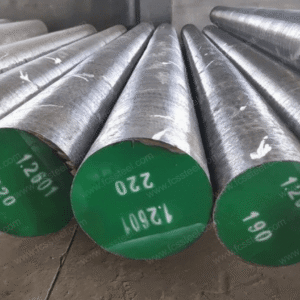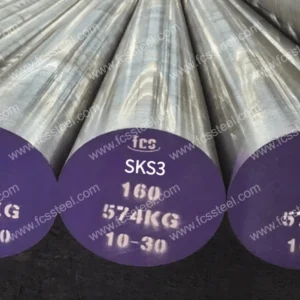9CrWMn Tool Steel
9CrWMn tool steel features excellent wear resistance and quenching stability. It is suitable for cold working die parts with complex shapes, small cross-sections and high precision requirements.
9CrWMn Tool Steel – Product Forms & Inventory Specifications
Supply Condition
- Annealed
- Machined
Available Forms
- Round bars
- Plates / Flat bars
- Custom-cut pieces
Processing Services
- Sawing.
- Rough machining.
- Custom heat treatment.
Standard Size Range (Availability varies by stock)
- Diameter (Round bar): Φ10 mm – Φ65 mm / Φ70 mm – Φ400 mm / Φ500 mm / Φ600 mm / Φ700 mm.
- Plate/Flat Thickness: 8 – 45 mm / 50 – 500 mm.
- Width: 50 – 1000 mm / 50 – 1500 mm.
- Forged Discs: Up to Ø1200 mm.
9CrWMn Tool Steel – Forming Methods
- Hot Rolled
- Hot Forged
9CrWMn Tool Steel – Surface Finish Options
- Black.
- Grinded.
- Sandblasted.
- Turned/Machined/Milled/Bright.
What is 9CrWMn Tool Steel?
9CrWMn is a low alloy cold working tool steel in the Chinese GB/T 1299 standard, also known as GB-9CrWMN or SKS3 (DIN 1.2510 / AISI O1).
International Equivalent Grades of 9CrWMn Tool Steel
Chemical Composition of 9CrWMn Tool Steel
9CrWMn Steel Product Specifications
9CrWMn Steel Heat Treatment Process and Properties
- Annealing: Hold at 780-800 °C and cool slowly (≤50 °C/hr), with a hardness of approximately 200-240 HB.
- Quenching: 860-900 °C oil cooling, hardness can reach 60-64 HRC; The hardness of large parts is slightly lower (about 57 HRC).
- Tempering: Commonly used is 200-250 °C (to stabilize hardness), or toughened to 400-450 °C; Avoid the tempering brittleness temperature range (300-350 °C).
9CrWMn Steel Main performance characteristics
- It has a high quenched hardness of up to 64 HRC, making it suitable for high-wear scenarios.
- It has small cold deformation and excellent dimensional stability.
- The fine and uniform carbides enhance the overall toughness.
- It has a relatively low impact sensitivity, but sudden cooling cracking still needs to be avoided.
Additional information
| Weight | 45 kg |
|---|---|
| Dimensions | 165 × 60 × 25 cm |

